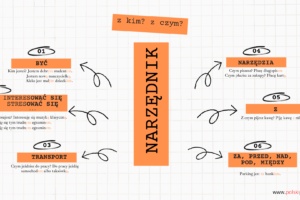
Inside the Polish Classroom: Polish Education System from Nursery to University.
Education in Poland has a long and fascinating history, dating back to the 10th century. Today, the country boasts of a well-developed education system that aims to provide quality education to all students. This article will provide you with a comprehensive overview of the education system in Poland, including its structure, curriculum, and challenges.
NURSERY – ŻŁOBEK
Nursery (żłobek in Polish), provides childcare services for children aged from a few weeks to three years old. They are often used by working parents who need to leave their children in a safe and supervised environment during the day.
Until 2011 nurseries were overlooked by Health Ministry and recognized as medical facilities for healthy children. As a consequence their main function was to provide care and health prevention for children, and the vast majority of specialists were nurses and medical-related caregivers. Since 2011, the Ministry of Family, Labor, and Social Policy has been responsible for the work of these institutions. With the change of the ministry, new roles for nurseries, children’s clubs, and daily caregiver centers were defined, namely childcare and education.

There are two main types of nurseries in Poland: public and private. Public nurseries are run by local authorities and are generally cheaper than private nurseries. The fee depends on many factors and is determined by local authorities.
Private nurseries are run by private companies or individuals and offer more flexible services and higher standards of care but also much higher fee, which depends on the location and services that are being offered by the institution.
Public nurseries are definitely less available than private ones and parents tend to submit public nurseries applications even just after the child is born. Detailed information about the availability of places in the closest area can be found on the local government website.
Nurseries in Poland are regulated by the government and as such they should meet strict standards to ensure the health, safety, and development of the children in their care. Institutions should be staffed by trained professionals, such as educators, nurses, and caregivers. The number of staff members per child is strictly regulated by law and depends on the age of the children. The curriculum is designed to promote children’s physical, cognitive, and emotional development, and may include music, art, and language activities.
KINDERGARTEN – PRZEDSZKOLE
Kindergarten, known as przedszkole in Polish (literally translation “preschool”), provides preschool education and childcare services for children aged three to six years old. They are an important part of the Polish education system, providing a foundation for children’s social, emotional, and cognitive development.
Since 2017 according to law, each local government must ensure access to public kindergarten for every child who lives in their district (there may be additional conditions such as paying taxes on behalf of the local government or registration of residence in the area). That may be a great solution for parents, as public kindergartens provide free of charge 5 hours of daily care (every additional hour is paid, but those are extremely small fees, like 1 zł per hour) and cheap meals. If it comes to private kindergartens, similar to private nurseries, they are run by private companies or individuals and offer more flexible services and higher standards of care but for a significantly higher fee.
Kindergartens in Poland provide a range of educational and play-based activities to promote children’s social, emotional, and cognitive development. The curriculum is designed to prepare children for primary school and may include activities such as reading, writing, math, art, and music. The curriculum includes two hours per week of religion classes that are taught based on the guidelines of the Roman Catholic Church. While these classes are not compulsory, they are available for students whose parents choose to have them attend. If parents decide against sending their child to these classes, the school is required to provide alternative activities and supervise the child while others are in religious instruction. The teacher responsible for teaching religion is appointed by the church and approved by the Ministry of Education. This teacher can be a secular person, a priest, or a nun.
Nurseries in Poland are regulated by the Ministry of National Education and must meet strict health and safety standards.
According to data from the Central Statistical Office of Poland, in the 2020/2021 school year, around 1.4 million children attended nurseries, or kindergartens in Poland. This represents approximately 70% of all children between the ages of 3 and 5 in the country. Attendance rates can vary depending on factors such as geographic location, income, and cultural attitudes toward early childhood education.
There is no vacation break in Polish nurseries or kindergartens, they operate the whole year will only short breaks connected to public holidays.

PRE-SCHOOL – ZERÓWKA
Zerówka is a term used to describe the “zero year” of primary education. It is essentially a preparatory year before the first year of primary school, intended for children who finished 6 years old.
During zerówka, children are introduced to the basics of reading, writing, and mathematics in a playful and engaging way. They also participate in various creative and physical activities, such as drawing, singing, and sports. The goal of this year is to help children adjust to the school environment, develop social skills, and gain the basic knowledge and abilities necessary to succeed in primary school.
Zerówka is compulsory, it is the first stage of education which is falling under “school duty” which applies to all children between the ages of 7 and 18, and it is enforced by law.
During this time, children are required to attend school and participate in all classes and educational activities. Parents or legal guardians are responsible for ensuring that their children attend school regularly and participate in all required coursework.
Zerówka can be seen as a bridge between early childhood education and primary school education, rather than part of either system. In some cases, preschool classes are fulfilled in the same building as kindergarten, in others already in the primary school building. That’s up to conditions ensured by the local municipality and parents’ choice.
PRIMARY SCHOOL – SZKOŁA PODSTAWOWA
A primary school in Poland, known as szkoła podstawowa, provides education for children aged six/seven to fifteen years. The curriculum is designed to provide a broad-based education that prepares children for secondary education and beyond. There are several mandatory subjects being taught as Polish language, mathematics, history, geography, biology, art, music, physical education, or foreign language. There are also optional classes like religion.
Despite Polish school making significant progress in education in recent years it is still far away from perfection and is subject to constant reforms. Currently primary school least for 8 years.
Primary school ends with a mandatory exam – egzamin ósmoklasisty. The test consists of 3 majors: Polish, math, and foreign language.
In Poland, primary and secondary education is provided free of charge by the government. However, private schools are also available for those who prefer a different approach to education. Homeschooling is also an option, but it is not widely practiced.
Primary and secondary schools in Poland follow the academic calendar year, which usually starts in September and ends in June. During this time, students attend school on weekdays and have holidays during national and religious celebrations, as well as winter break in between semesters (ferie). The exact dates may vary depending on the specific region and school. The months of July and August are commonly referred to as wakacje in Poland, which are typically free from educational obligations.
There is no obligation to wear a uniform for pupils in primary schools in Poland. It is up to the individual school’s policy or the student’s preference to wear a uniform or not. Some private schools may have a dress code or require uniforms, but it is not a common practice in public primary schools.
SECONDARY SCHOOL – SZKOŁA ŚREDNIA
Secondary school in Poland (szkoła średnia), provides education for students aged between fifteen and nineteen years old. The main aim of secondary education in Poland is to prepare students for further education or for entering the workforce.
There are several types of secondary schools in Poland, including general secondary schools (liceum ogólnokształcące), technical schools (technikum), and vocational schools (szkoła zawodowa) which prepares learners for jobs that are based in manual or practical activities. Depending on the type of school they last for 3 up to 5 years. The curriculum is more specialized than in primary school.
After completing secondary school, students can choose to continue their education in higher education institutions, such as universities or colleges, or enter the workforce. Students who wish to attend university must pass a special exam called matura – a national exam that tests their knowledge in core subjects. The exam is used as the primary factor in determining a student’s readiness for higher education and is required for admission to most universities in Poland. Matura exam consists of two stages: written and oral and several subjects including Polish language and literature, mathematics, and a foreign language, but also optional subjects chosen by the student. The exam is divided into two levels: basic – poziom podstawowy and extended- poziom rozszerzony. The basic level covers the minimum required material in each subject. Students who pass the extended level of the exam are generally considered to have a deeper understanding of the subject matter and are better prepared for the challenges of university-level education. The results of the exam are used to calculate a final score, which is then used in the university admissions process.
The culmination of secondary education in Poland is marked by a prom event known as studniówka, which derives its name from the combination of the words sto (one hundred) and dni (days). This is because the event has traditionally been held one hundred days prior to the final exams and the end of the school year.

HIGHER EDUCATION – STUDIA
There are several types of higher education institutions in Poland, including universities (uniwersytet), technical universities (politechnika), medical universities (uniwersytet medyczny), academies of fine arts, and others (akademia). Students may choose a typically free-of-charge public higher education institution or a private one where the fee is required. They can also choose between full-time (studia dzienne) and part-time studies (studia zaoczne). While studying full-time students attend lectures, classes, and seminars on a daily basis during the week, while part-time students attend classes on a less frequent basis, usually on weekends or in the evenings.
In order to be admitted to a higher education institution in Poland, students must typically hold a secondary school diploma and good results from its final exam- matura, and pass an entrance exam if required by the chosen program. Higher education institutions in Poland offer a range of degree programs, including Bachelor’s (licencjat) , Master’s (magister), Engineer (inżynier) and Doctoral (doktor) degrees. Some institutions also offer non-degree programs, such as postgraduate diplomas (studia podyplomowe). Each semester during the academic year ends with an exam period called sesja.
The language of instruction at higher education institutions in Poland is primarily Polish, although some programs are offered in English or other languages. Polish higher education institutions are recognized internationally, and degrees earned in Poland are generally accepted around the world. The country has a long and rich history of academic excellence with the oldest university in Poland-Jagiellonian University in Kraków, dating back to 1364. There are 11 Polish higher education institutions on the Shanghai Ranking – ranking of the 1000 best academic universities and institutions around the world. The two best ones are Jagiellonian University in Kraków and the University of Warsaw (both in the 401-500 group).
Poland has one of the highest rates of higher education enrollment in Europe, with over 50% of young people choosing to pursue a university degree. Recently the most popular majors are IT, psychology, administration, law, and medicine.
EDUCATE IN POLAND
Poland offers a range of opportunities for international students who wish to pursue higher education in the country. There are over 500 higher education institutions in Poland. Many of these institutions offer courses in English, making it easier for international students to pursue their studies in Poland.
In addition, there are numerous scholarship programs available for international students, including the Polish government scholarship program, the Erasmus+ program, and scholarships offered by individual universities. These programs can help cover tuition fees, living expenses, and travel costs.
While the Polish educational system has some drawbacks and is not without its faults, it undoubtedly offers many benefits. Critics argue that the Polish educational system can be highly competitive, with an emphasis on grades and exam results, and little room for individualized or creative teaching methods. On the other hand, it is definitely of a good standard and is affordable and widely accessible.
Whether you’re a Polish national or an international student, there are plenty of opportunities to gain a good level of education in Poland.



